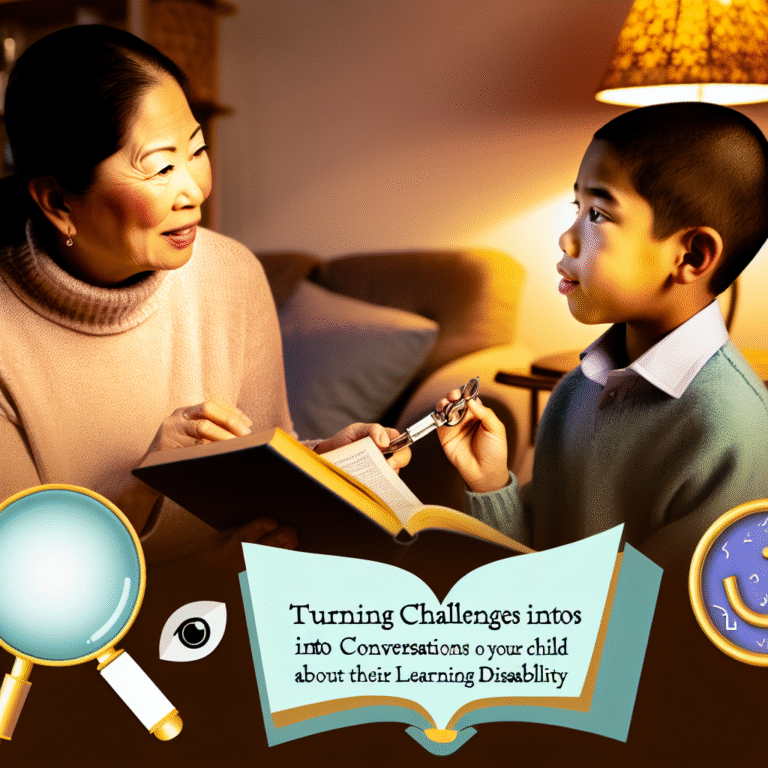
Introduction
Navigating difficult conversations is a challenge that every parent and teacher faces at some point. Whether it’s addressing a child’s poor performance in school, discussing social conflicts, or unpacking sensitive topics like mental health or sexuality, these conversations can feel daunting. However, they are also opportunities for growth, connection, and understanding. In "Navigating Difficult Conversations: A Guide for Parents and Teachers," we will explore effective strategies to approach these tough talks with confidence and compassion.
Why These Conversations Matter
Difficult conversations often lay the groundwork for deeper relationships. They foster trust and create an environment where children feel safe to express their thoughts and feelings. By mastering the art of navigating these challenging discussions, parents and teachers can guide children toward resilience and empathy.
Understanding the Landscape of Difficult Conversations
The Emotional Terrain
Difficult conversations are inherently emotional. Parents and teachers need to recognize the emotions at play—both theirs and the child’s. According to psychologists, emotion drives much of our behavior. When navigating conversations about issues like bullying, family changes, or academic pressure, acknowledging emotions can make a significant difference in how the discussion unfolds.
Case Study: The Bully and the Bullied
Consider the case of Maria, a 7th grader experiencing bullying at school. Her teacher, Mr. Smith, noticed she was withdrawing and performed poorly in class. Instead of assuming the problem stemmed from laziness, Mr. Smith chose to engage her in a difficult conversation. By opening the dialogue with empathy—acknowledging her feelings and inviting her to share her experience—Mr. Smith was able to support Maria effectively.
Analysis: This case emphasizes the importance of emotional intelligence in navigating difficult conversations. Mr. Smith’s approach underscores that understanding emotions is key to facilitating productive discussions.
Preparing for a Difficult Conversation
Set Clear Objectives
Before engaging in a challenging conversation, it’s essential to identify your objectives. What do you want to achieve? Do you aim to resolve a problem, educate your child on a topic, or simply listen? By having clear objectives, you can guide the discussion more effectively.
Example Objectives:
- Understand a child’s perspective on schoolwork.
- Address and resolve conflicts between peers.
- Discuss personal or family challenges impacting a child.
Creating a Conducive Environment
The setting of your conversation matters. Choose a comfortable and quiet space where disruptions are minimized. Consider these tips when setting the stage:
- Time: Select a time when both parties are free from distractions.
- Comfort: Ensure the space feels safe and welcoming.
Tip: Sometimes, a casual environment, like taking a walk, can open up more relaxed dialogue.
Initiating the Conversation
Use "I" Statements
When discussing sensitive topics, frame your feelings using "I" statements to avoid sounding accusatory. This technique helps create a safe space for dialogue.
Example: Instead of saying, "You never do your homework," try, "I feel worried when I don’t see your homework completed."
Open-Ended Questions
Encourage dialogue by asking open-ended questions that allow the child to share their feelings and thoughts. Avoid yes/no questions.
Example Questions:
- "Can you tell me more about your experience with your friend?"
- "How do you feel about what happened in class today?"
Case Study: Academic Struggles
For instance, consider Jake, who is struggling with math. His mom noticed his sullen attitude when grades came out. Rather than reprimanding him about grading, she sat down and asked, "What are your thoughts on math class this year?" This simple open-ended question opened the door to a more in-depth exploration, revealing that Jake was struggling with a specific topic and felt embarrassed asking for help.
Analysis: This case illustrates how initiating conversations with an empathetic approach can lead to a better understanding of the child’s struggles and pave the way for solutions.
Navigating the Conversation
Active Listening
Good communication involves listening as much as speaking. Practice active listening by:
- Nodding in acknowledgment.
- Repeating back what you heard for clarity.
- Avoiding interruptions.
Validate Their Feelings
Empathy is vital in navigating difficult conversations. Validate the child’s feelings, even if you disagree. Let them know it’s okay to feel however they do.
Example: “It’s completely understandable to feel frustrated about your grades. Many kids feel this way sometimes.”
Managing Disagreements
Disagreements can be healthy if handled well. If you find yourself at odds, use phrases like:
- "I see things differently, but I’m here to understand your perspective."
- "Let’s explore why we have different opinions."
Case Study: Family Dynamics
In a family environment, Eli felt uneasy about his parents’ impending divorce. During a family meeting, his father engaged him by saying, “I know this is really hard for you.” By validating Eli’s feelings, the family could begin discussing emotions and concerns, creating space for healing.
Analysis: This scenario proves that validating feelings can facilitate constructive dialogue, especially in emotionally charged situations.
Moving Towards Solutions
Collaborate on Solutions
Once the discussions have covered feelings and perspectives, transition toward solutions. Ask the child for their thoughts on resolving the issue.
Example: “What do you think we could do to help with your math struggles?”
Setting Boundaries and Expectations
If the conversation involves behavior change, clearly establish boundaries and expectations. Make sure to articulate what these entail, and involve the child in the decision-making when feasible.
Example Table: Setting Expectations
| Expectation | Explanation |
|---|---|
| Homework Completion | Complete all assignments by Friday. |
| Communication | Speak respectfully, even in disagreement. |
| Seeking Help | Don’t hesitate to ask for assistance. |
Follow-Up: Keeping the Dialogue Open
Regular Check-Ins
Difficult conversations shouldn’t be one-off events. Schedule regular check-ins to revisit topics discussed. This ongoing dialogue normalizes discussions about feelings and problems.
Case Study: Ongoing Communication
Sara, a teacher, held weekly check-ins with her students to discuss their academic and emotional wellness. When Gary, a student, expressed feeling overwhelmed, he was able to articulate his struggles. After their conversation, Sara provided support and guidance which continued to enhance his confidence.
Analysis: The practice of regular check-ins reinforces that maintaining communication lines is essential for long-term success and emotional support.
Conclusion
Navigating difficult conversations is an integral part of nurturing healthy relationships between parents, teachers, and children. By employing empathy, active listening, and establishing a supportive environment, we can turn these tough discussions into opportunities for connection and growth. As parents and educators, let us empower our children to share their feelings and triumphs, guiding them with patience and understanding.
Actionable Takeaway
Remember that no conversation is perfect. What matters is the intent behind the dialogue. Approach each discussion as a partner in learning and growing, and you will find that navigating difficult conversations becomes an enriching experience for everyone involved.
FAQs
1. How can I prepare my child for a difficult conversation?
Encourage your child to express their emotions beforehand. Offer them a safe space to articulate their feelings, and make sure they know they can share openly without judgment.
2. What should I do if my child refuses to talk?
If a child is reluctant, give them space but let them know you’re available when they’re ready. Sometimes writing down feelings or journaling can help bridge communication.
3. How can I avoid escalating tensions during these conversations?
Remain calm and composed. Use relaxed body language and focus on listening rather than reacting. Always aim to understand before seeking to be understood.
4. Should I involve other adults (like a spouse or co-parent) in these conversations?
Yes, if appropriate. Collaboration with another adult can provide support and consistency in addressing difficult topics.
5. How can we ensure that our children learn from these conversations?
After discussing a topic, ask the child what they think about the solutions proposed and how they feel. Encourage them to think critically about their own responses and solutions to similar challenges in the future.
This guide serves as your roadmap for successfully navigating the sometimes choppy waters of difficult conversations with children. By approaching these discussions with skill and empathy, you are laying the foundation for a robust, trusting relationship. Embrace the challenges, and you will empower both yourself and your children to thrive.












